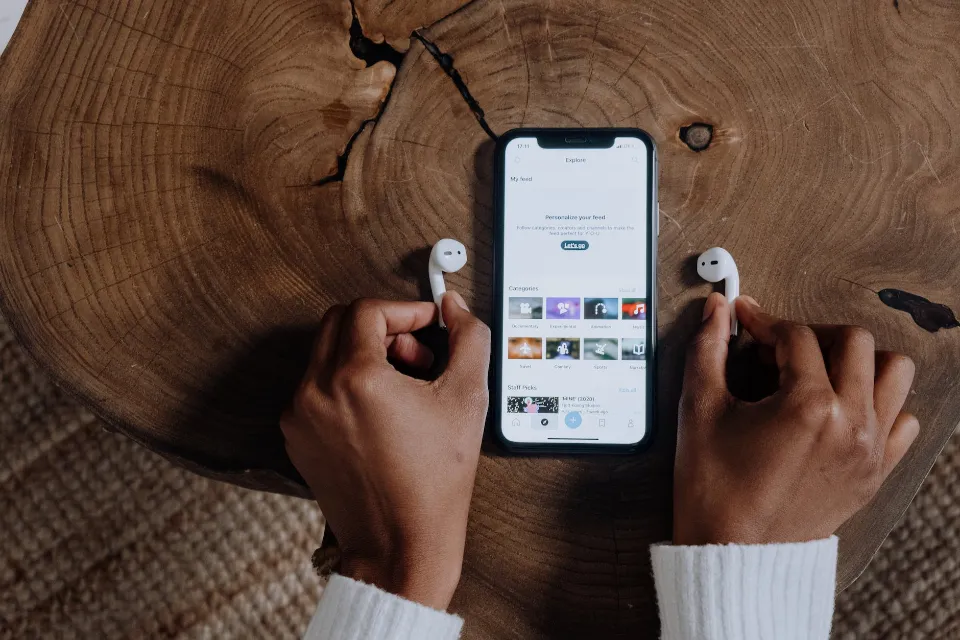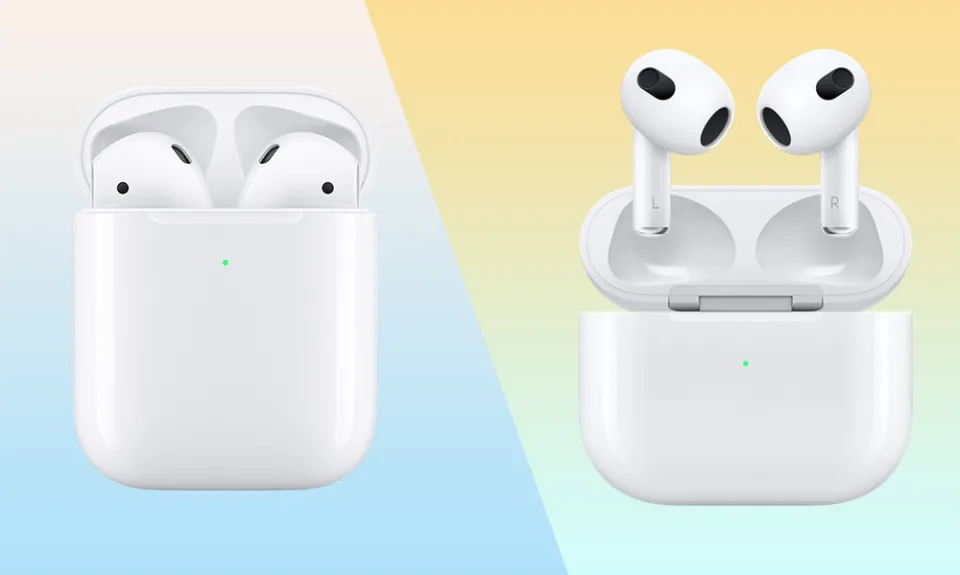Are AirPods Bad for Your Ears? Everything You Need to Know
Find out are AirPods bad for your ears and what you can do to stop any discomfort from getting worse.
AirPods can definitely be bad for your ears but it’s the same problem with almost any type of earbud: people are more likely to turn up the volume on in-earphones and this can lead to permanent hearing damage.
Please continue reading to learn how to prevent AirPods from irritating your ears.
Are AirPods Bad for Your Ears?
Are AirPods able to harm your hearing? Yes, regardless of whether they are Beats, AirPods, or Bose. Hearing loss can occur when you use headphones or earbuds, as well as when you are exposed to loud noise.
When your ears are exposed to loud noises, the fluid in your inner ear moves more. The hair cells that transmit signals to your brain may suffer severe damage as a result.
In and of themselves, headphones are not dangerous. You could listen to it at a low-to-medium volume all day without getting sick. Your ears only start to get hurt when you listen to loud music for extended periods of time.
Related Post:
Why Do AirPods Hurt Your Ears?

Wearing AirPods could hurt your ears for a number of different reasons. Here, we break down the leading causes:
- Your AirPods don’t fit you properly
- You’re wearing the AirPods wrong
- You’ve been wearing them for too long
- Ear infections
Your AirPods Don’t Fit You Properly
Because AirPods 1, 2, and even the new AirPods 3 only come in one standard size, it’s possible that wearing them will cause ear pain if they are not compatible with your ear profile.
Furthermore, since every person has a unique ear shape, this one-size-fits-all strategy might not be comfortable to wear and may not match your ear profile.
You’re Wearing the AirPods Wrong
Although it might seem like the most obvious advice, you might be wearing your AirPods improperly.
The wrong way of wearing them degrades sound quality and is uncomfortable, making the whole experience unpleasant. Because AirPods are designed to fit your ears, they have some unique curves that won’t feel comfortable if you try to force them to fit incorrectly.
You’ve Been Wearing Them for Too Long
Sometimes, wearing your AirPods for an extended period of time can result in skin chafing, itching, and even ear pain. This is not only uncomfortable, but nonstop, uninterrupted use of your AirPods can harm your ear health.
In particular when done at loud volumes, prolonged overexposure to sounds can result in temporary or permanent hearing loss. In addition to other symptoms like tinnitus and ringing in the ears, this can cause ear pain.
You should only use AirPods for up to 90 minutes at a time in order to prevent ear pain. Gently massage your ears while they are off, then wait about 10-15 minutes before starting to listen again.
Ear Infections
We can’t exactly rule out ear infections, even though ill-fitting AirPods or excessive use are likely to blame for pain and soreness.
In contrast to typical ear pain, which is felt in the ear cartilage and can hurt even after you take off your AirPods, ear infections are frequently felt inside the ear canal or close to the eardrums. Sometimes, your ears may become inflamed and you might even notice discharge.
It’s a good idea to have a backup plan in case something goes wrong. By doing this, the ear canal is sealed off from the outside, allowing sweat and moisture to accumulate along with your ear wax. As a result, bacteria can flourish in the ideal environment, easily resulting in ear infections.
Read More:
- Why Do My AirPods Keep Pausing?
- Why Do My Airpods Sound Muffled?
- Why Can’t People Hear Me on My AirPods?
- Why is Airpods Flashing White and Not Connecting?
How to Stop AirPods (Gen 1, 2, & 3) from Hurting Your Ears

Even though AirPods 1, 2, and 3 come in all sizes, there are solutions and advice to prevent ear pain from occurring.
Here’s are some tips on how to prevent standard AirPods from hurting your ears:
Wear Your AirPods (Gen 1, 2, Or 3) Properly
It’s crucial to know how to wear your AirPods (Gen 1, 2, or 3), particularly if you plan to use them for extended periods of time. Despite the fact that these variants usually only rest on your ear lobe and not the ear canal, this does not mean you can just push them in and hope for the best.
Here’s how to wear your standard AirPods properly:
- Wipe the speakers with a cotton swab. Gently wipe off any oil, dirt, or residue from the tips of your AirPods. Your AirPods may come out of your ears as a result of oil or dirt. Cleaning them off with a cotton swab dampened with 70% isopropyl alcohol works well, but take caution, especially around the locations near the speaker grilles, to prevent any liquid damage from seepage. This will provide the earbuds with a smooth surface that has more grip. For a more detailed discussion, check out this guide on cleaning your AirPods.
- Check the L & R marks on your AirPods. Each AirPod is meant to be worn in either your left or right ear. Align the AirPods properly by checking the letter in the stem.
- Put your AirPods in gently. Insert the AirPods firmly into your ears. Ensure that your head and the stem are vertically aligned so that they form a line that is parallel to your face.
- Rotate and wedge in the AirPods to secure the fit. The AirPods should now be rotated until you feel tight and secure earbuds in your ear. This “locked” position should happen when the stem of your Nearly perpendicular to your jawline are AirPods.
Wear One AirPod at a Time
Even though it might be uncomfortable at first, wearing your AirPods regularly can help your ears adapt, and the discomfort or pain you’re feeling might eventually go away.
Regardless if this works for you or not, it’s still important to remember the 90-minute limit when wearing your AirPods.
You will, however, have to put up with the discomfort for a while. You can simply try wearing one AirPod at a time to prevent excruciating pain.
Each ear can rest while still being able to use your AirPods with a connected device by switching them around. Additionally, this prolongs the battery life of your AirPods and lets you use them for longer periods of time.
Using one AirPod at a time automatically switches it to mono-mode. To learn more about the distinctions between mono and stereo, refer to our guide.
How to Stop AirPods Pro from Hurting Your Ears
The AirPods Pro are a little bit bigger than the AirPods (Gen 1, 2, and 3), and they come with three different sizes of replacement ear tips to accommodate more users. However, if you’re still experiencing pain, here are some ways to stop your AirPod Pros from hurting your ears:
Wear Your AirPods Pro Properly
When compared to the standard AirPods, the AirPods Pro require a different method of wearing due to the addition of silicon replacement tips. Follow these steps to wear your AirPods Pro the right way:
- Turn the silicone tips over and measure them. Look for S, M, or L etched on the inside of the ear tip close to its base to find the sizing letter on your AirPods Pro. The AirPods Pro come with medium-sized tips by default, with the small and large-sized tips included in the box if you need to switch them out.
- The black vent should be lined up with the size letter. For the best fit, line up the sizing letter with the black vent of your AirPod Pro. When you have properly connected them, push them together and listen for a click.
- Press in, rotate, and wedge. You should adhere to the press-rotate-wedge procedure when putting on the standard AirPods. You should rotate the earbuds until you can feel them creating a cozy wedge on your ear after pressing your AirPods in until they are snugly in place.
Choose the Right Ear Tips for AirPods Pro
As mentioned, your AirPods Pro comes with three different sized tips (small, medium, or large) that you can swap out to achieve a comfortable fit. To assist you in selecting the proper size, Apple has a useful feature called the Ear Tip Fit Test.
The Ear Tip Fit Test can only be used with iOS or iPadOS versions 13.2 or higher.
Follow these steps:
- Connect your AirPods Pro to your iPhone once you’ve worn them.
- Click the “i” icon next to the name of your AirPods Pro in Settings > Bluetooth.
- Click the information button beside your device and press “Ear Tip Fit Test”.
- If the text advises adjusting or attempting a different tip, make the necessary adjustments to your AirPods Pro and rerun the test. Instead, you might experiment with using two different sizes for your left and right ears.
Try Third-party Ear Tips
If, for whatever reason, after attempting all size combinations, you’re still unable to find a comfortable fit, you might want to think about spending money on ear tips from a different manufacturer.
Memory foam ear tips are the next best replacement for Apple’s silicone ear tips.
Conclusion: Are AirPods Bad for Your Ears
AirPods were released in 2016 and we have a lot to learn about the newly emerging sonic culture and how it might impact our health.
One hour a day is all that is recommended by the World Health Organization for headphones use.
With this new information, you should be one step closer to having a pleasant and pain-free listening experience.
FAQs
Why Do Airpods Make My Ears Waxy?
The earbuds themselves do not typically lead to more wax production. Instead, they interfere with the airflow in the ear canal, which can cause wax.
How Long Should You Wear Airpods a Day?
Earphones should be used daily for one hour at 60% volume.
What Happens If You Wear Airpods for Too Long?
Even if only temporarily, damaging your hearing by turning up the volume on them to dangerous levels could happen.







